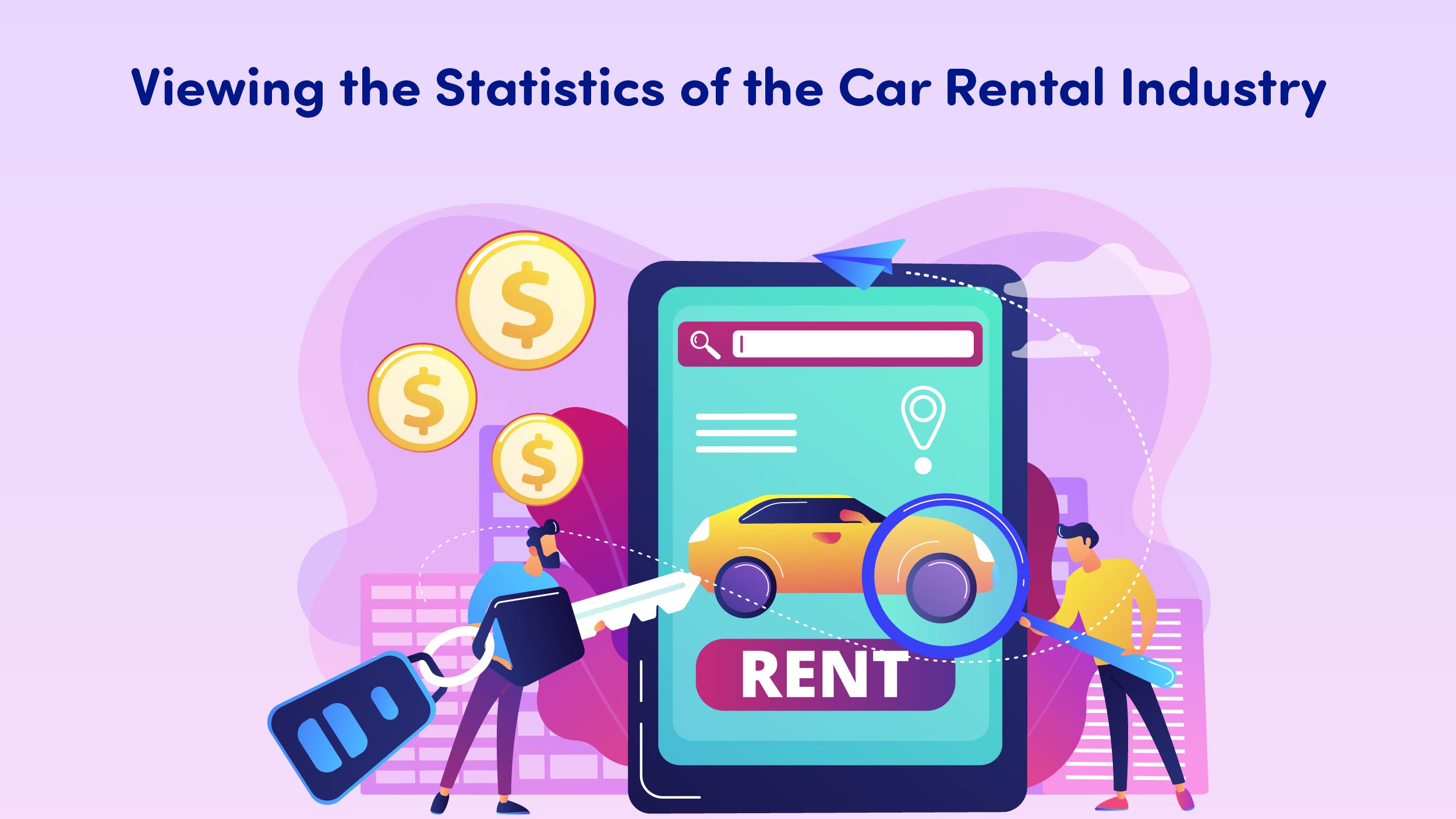In recent years, the car rental industry has experienced significant growth, reaching new heights with technological advancements. Adaptations, both small and large-scale, have aligned with customer expectations, making the industry more responsive and proactive. This technological integration is not only meeting practical needs but also driving up the bottom line for car rental businesses.
Here are five groundbreaking rental car industry trends brought about by the digital evolution of the car rental sector.
Viewing the Statistics of the Car Rental Industry

According to Statista, the car rental industry’s statistics are given below:
- In 2023, the car rental segment generated US$104 billion in revenue.
- Revenue is anticipated to rise at a pace of 3.49% per year (CAGR 2023–2027), with a forecasted market size of US$119.30 billion by 2027.
- By 2027, internet sales in the car rental industry will account for 72% of all revenue.
- In terms of global comparison, the United States will produce the most revenue ($29,940.00 million in 2023).
In recent years, the US car rental market has been expanding steadily. The growth of the industry has been aided by the presence of some of the top vehicle rental businesses in the US. The COVID-19 pandemic had a substantial influence on the sector, resulting in a sharp decline in revenues in 2020. The business has subsequently recovered, though, and generated $36.1 billion in revenue in 2022, up 21% from 2021.
5 Innovations in the Car Rental Industry

The top 5 developments in the rental car sector are listed below:
AI-based Solutions
On-board sensors allow for real-time tracking and transmit billions of data points about the vehicle and its components to the cloud. AI-powered algorithms aid in the optimization of routes and the allocation of optimal inventory to meet local demand hotspots. Even minor tweaks can have a big impact on the vehicle’s profit margins. AI integration also allows for real-time tracking of the vehicle, regardless of its location.
Rental companies may provide individualized services and recommendations by using AI to assess consumer data and preferences. Customer loyalty and satisfaction may increase as a result. AI may be used to spot fraud indicators, including forged identification documents and credit card theft. This can lower the possibility of financial losses for rental companies and raise the operational safety of those businesses.
Rental firms may improve their fleets and cut expenses by using AI to evaluate data on vehicle usage and maintenance. They can use it to spot trends and decide intelligently whether to buy new cars.
Technologically Integrated
Telematics has long provided connected technology, which is essential to the carsharing process. However, the vast majority of devices are still manually installed on the car rental lot, posing a barrier to widespread adoption. Connectivity will also increase the number of opportunities for on-demand rentals. This does not necessarily imply that carsharing will replace the traditional rental model; rather, it allows rental companies to create a more seamless experience and form partnerships to dynamically place fleets based on demand.
Knowing the locations of rental cars allows managers to control any situation with greater precision — just ask operators how GPS tracking saved countless rental days simply by identifying a rental car in a police impound yard.
Subscription
Subscription-based services are likely to completely disrupt the traditional vehicle ownership model. Subscription packages are now available for a variety of vehicle categories, with flexible durations ranging from one month to 36 months. Subscriptions provide an opportunity for a completely new group of people who would not have been able to afford a car in the past. These are also ideal for customers who want to keep their options open and even seamlessly switch cars as their needs change. Subscriptions are an unbeatable value because of their flexible pricing and ability to reduce monthly fees by sharing the car for short-term rentals.
Tourism
Renting a car from airports, hotels, and tourist attractions was already in high demand. Major airports are now collaborating with car rental companies to provide a seamless pick-up and drop-off experience for both tourists and business travelers. The second most important integration point is with hotels. As tourism use cases gradually return to normalcy following COVID-19, the emphasis will shift to micro-tourism within a 200-kilometer radius.
In comparison to using cabs or employing private drivers, renting a car is frequently a more affordable option. Due to this, a lot of vehicle rental businesses have customized their offerings to cater to the demands of visitors, providing airport pickup and drop-off, personalized itineraries, and multilingual customer care.
E-mobility
A clear trend that we are likely to see in the coming years is a shift toward electric vehicles. In the first quarter of 2023, over 320,000 electric cars were sold in the United States, marking a 60% increase compared to the corresponding period in 2022. There are already clear signs that fleet operators are opting for e-mobility due to lower operating and maintenance costs. Government support in the form of a regulatory framework, subsidies, and the expansion of charging infrastructure will most likely accelerate the trend toward e-mobility.
Winding It Up
Looking ahead, the car rental industry trends in 2024 and beyond promise to continue its trajectory of innovation and transformation. As advancements in electric and autonomous vehicles accelerate, we can expect to see even greater integration of these technologies into the rental ecosystem. The concept of mobility-as-a-service (MaaS) is poised to take center stage, offering seamless multi-modal transportation solutions that cater to the preferences and needs of individual travelers. Through a combination of technological advancements, sustainable practices, and customer-centric approaches, the industry has been redefined in ways once unimaginable. As we step into the future, the possibilities are endless, and the only constant is change.




